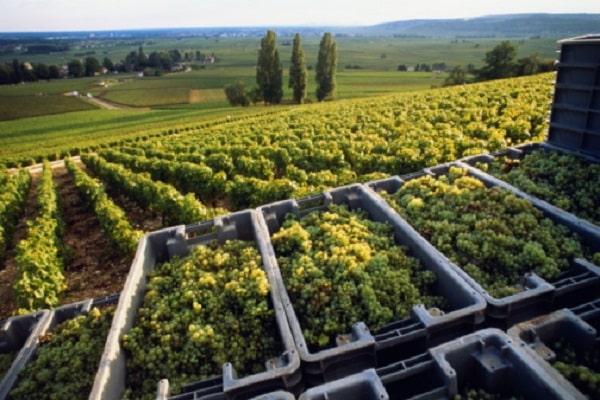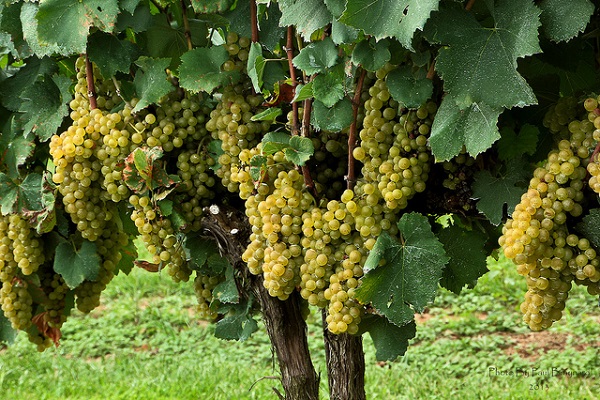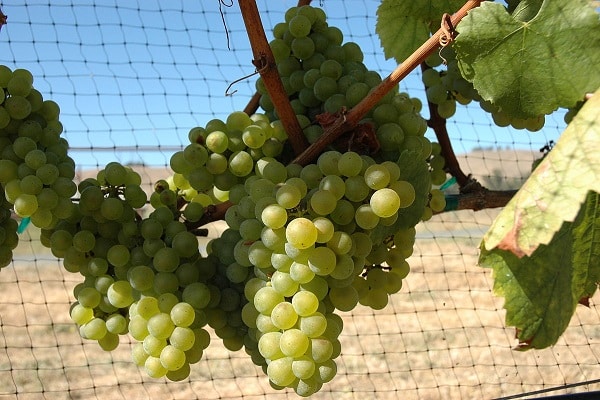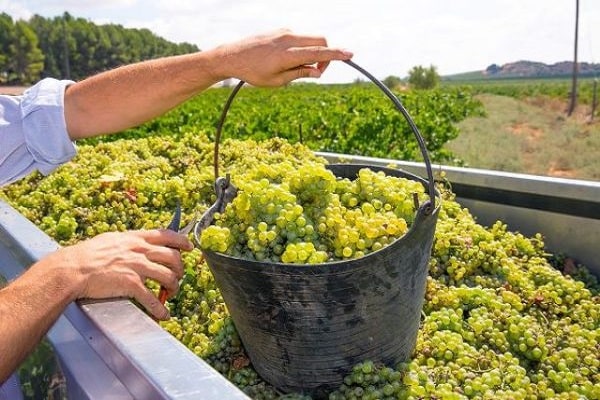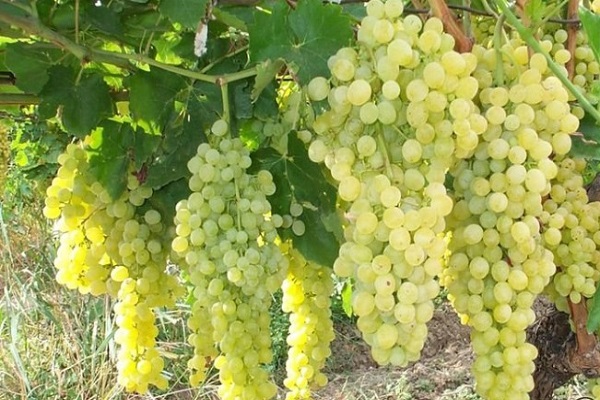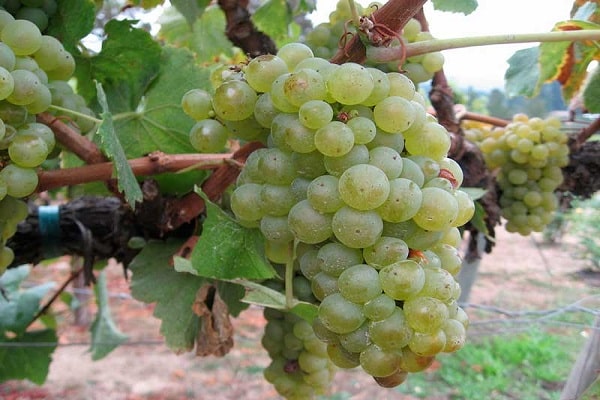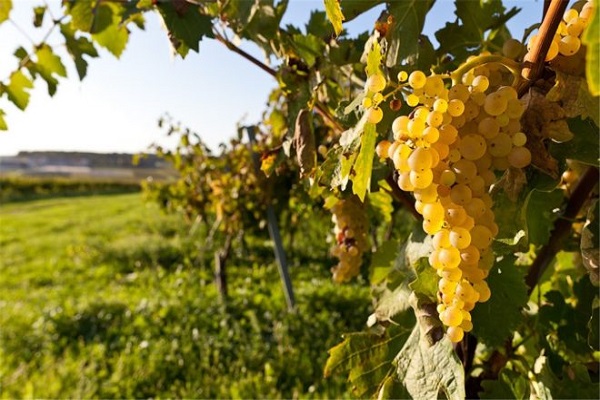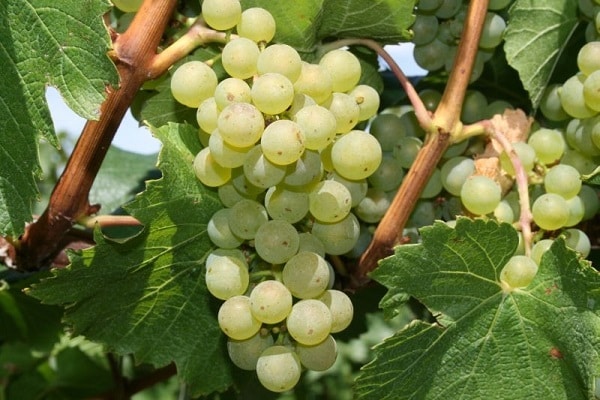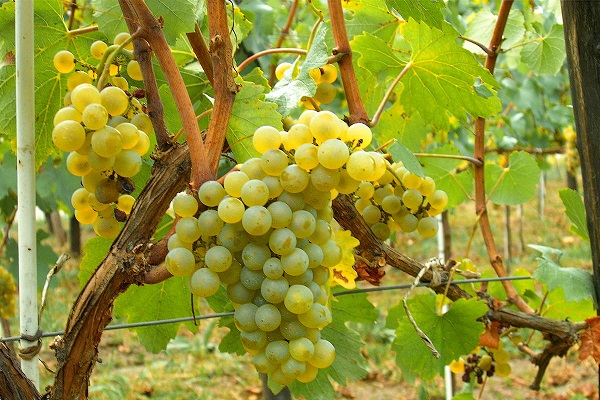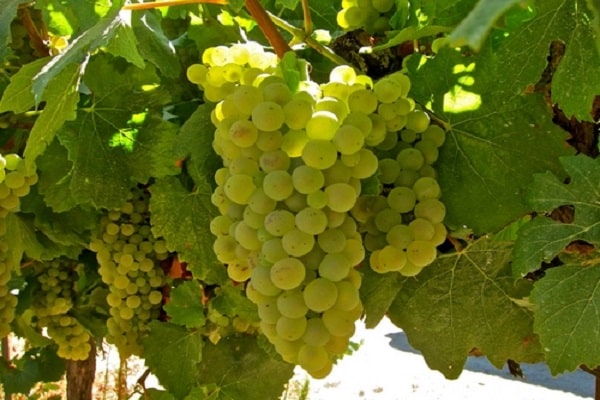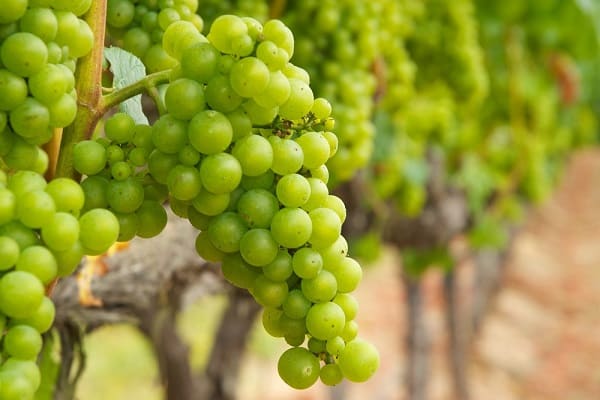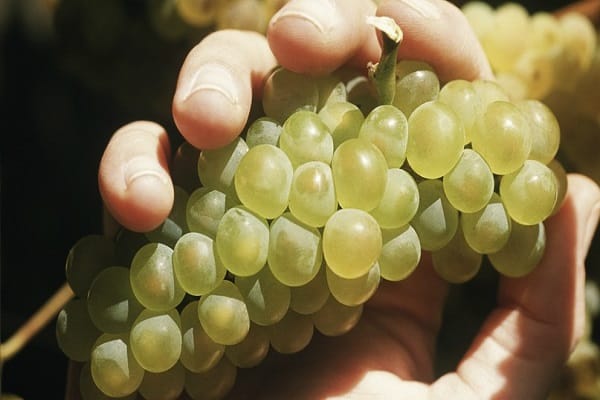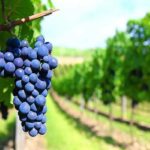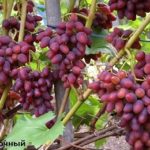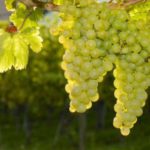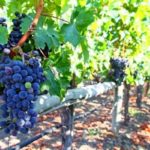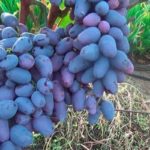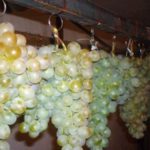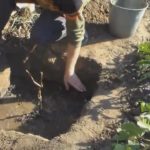Chardonnay grapes are grown in different climatic conditions. The taste of the berries, the richness of the aroma, and the predominance of sour or sweet notes depend on this. Chardonnay is a wine variety; accordingly, the bouquet of sparkling wines and traditional varietal wine of the same name depends on the taste of berries grown in cold or hot climates. In each region, the taste of the drink is individual and unique. Grapes grown in temperate climates have a more expressive taste.
Description
A low-yielding, early-ripening variety that produces clusters weighing up to 200 g.The shape and weight of the bunch depend on the climatic conditions of the region where the vineyard is planted, the quality of the soil and proper care. No more than 130 days pass from the beginning of flowering to harvest; technical maturity occurs earlier.
Description of the berries of the Chardonnay grape variety:
- small, round, 1.6 cm in diameter, weighing up to 4 g;
- color from greenish-yellow to pale golden;
- the skin is dense;
- 2-3 bones;
- juice is 75%;
- 26% sugar from the total proportion of juice.
Citrus flavor and aroma are the hallmark of Chardonnay.
The vine is medium-sized, strong, growing quickly. Chardonnay leaves are medium-sized with bristles on the veins on the outer side and hairs on the underside. They can be divided along the edges into 3 or 5 parts. The special feature is the down-curved corners.
Story
The Chardonnay variety has a second name - White Burgundy. The mother vine of the strain serves for the cultivation of grape crops adapted to the individual climate characteristics of the region.
There are 2 varieties of Chardonnay grapes used in wine production: Rose and Blanc Musquet.
For industrial winemaking in many countries of the world, including Russia, the Czech Republic, and Georgia, Chardonnay Rose is grown, characterized by amber, translucent berries. Chardonnay Blanc Musquet is added to wines to create a rich blend.
Breeding work to improve the quality of Blanc Musquet is being carried out in the USA, Austria, and Brazil due to the susceptibility of the mother vine to Pierce's disease.
For your information! With Pierce's disease, the affected vine experiences a delay in the vegetative stage; in the middle of the ripening season, the leaves begin to dry out at the edges, quickly affecting the entire leaf.
According to scientists at the University of California, voiced in 1991, strains of Gouais Blanc and Pinot Noir were crossed to produce Chardonnay. Not all scientists agree with this version.There is an opinion that Chardonnay was originally created by nature itself.
Properties
Each grape variety has its own characteristics. Red, black and green grapes have their own characteristics - they differ in the content of fruit sugars, acidity, balance of vitamins and minerals.
Calorie content
100 g of Chardonnay berries contain 60.33 kcal.
The nutritional value:
- proteins - 0.54 g;
- fats - 0.08 g;
- carbohydrates - 14.93 g.
Chardonnay grapes have a high calorie content compared to apples, but this is not an obstacle to recommending this product as an ingredient in therapeutic diets.
Benefits and harms
The leaves, seeds, and berries of grapes contain about 200 elements beneficial to humans:
- Vitamins.
- Minerals.
- Phytosterols that prevent the formation of cancer cells and inhibit their growth.
- Antioxidants, flavonoids.
- Disaccharides and monosaccharides
- Cellulose.
- Acids.
Moderate, systematic consumption of grapes helps strengthen the immune system, heart, thins the blood, facilitates kidney function, and prevents constipation. Grape juice dilates blood vessels. People suffering from migraines, with regular consumption of fresh grape juice, quickly get rid of their illness. For asthmatics and hypertensive patients, grapes should become one of the regular products of the daily diet.
Grapes can be harmful for people with:
- diabetes mellitus;
- obesity;
- colitis;
- chronic pyelonephritis;
- exchange nephropathy (uraturia);
- ulcers of the mouth, stomach, intestines;
- acute forms of tuberculosis;
- allergy to grapes.
Advice! Before introducing grapes into your regular diet, you should consult your doctor.
Acidity
The total acidity of technically ripe berries is 8.2-11.6 g/l of juice.In overripe berries, the acidity decreases, which makes them unsuitable for winemaking.
The combination of several acids of the original product and those formed during the fermentation process (natural fermentation) affects the taste of the wine. Grapes contain:
- C4H6O6 - tartaric acid. Contained only in grapes, its mass fraction in relation to other acids is 95%.
- A kilogram of unripe berries can contain up to 15 g of malic acid. Using unripe berries will give the wine a green apple flavor.
- Acetic, lemon, amber and oxalic acids are present in grapes in small quantities.
- Vanillic, hydroxycinnamic, lilac, and gallic acids are formed during the fermentation process.
Regulating the acid content during the wine making process directly affects the taste of the drink, its blend and aroma.
Characteristics of the bush
According to the characteristics, the Chardonnay grape bush is closer to the plants of Western European countries - France, Italy. Tall, semi-spreading, self-pollinating. An early flowering period, due to which in cold areas a loss of harvest may occur in whole or in part, if measures are taken in time - cutting off part of the shoots with the most swollen buds. This will delay flowering by about 2 weeks.
Vine
The young vine has a greenish tint. Shoots older than two years have brown bark. The nodes are weakly expressed. Frosts down to -20 °C are destructive for Chardonnay bushes; the bush must be properly wrapped for the winter period.
The vine can withstand drought more steadfastly than spring frosts, severe frosts and heavy rains in early summer.
Bunch
The average size is 11-15 cm, weighing from 100 to 200 g. The berries, located with an average degree of adhesion, form a conical-cylindrical shape.The flowers of the bush are male and female. During the formation of berries, some of them fall off, resulting in a loose bunch.
Productivity
Of all the shoots of the bush, only 40% bear fruit. On each of them 2-3 clusters are formed. To get a decent harvest, you will have to plant a lot of bushes.
Features of cultivation
The main feature of the variety is its love for rocky gentle slopes on the western side and clay-limestone soils.
Planting period
Seedlings are planted in spring and autumn. When planting in the spring in warm climates, holes for them are dug at a distance of 2.5 meters from each other. In autumn, on the eve of cold weather, the distance between planting holes is equivalent to planting Chardonnay in areas with a temperate climate - 1.5 m.
Ripening time
Despite the early flowering period, the Chardonnay variety is a mid-season variety. The growing season lasts 130-140 days. The harvest of technical ripeness in temperate latitudes is harvested from September 15 to 31.
Care
Chardonnay grapes do not require special care, other than protection from frost. With increased soil moisture, the vine will begin to rot, which necessitates the requirement for special soil. In case of prolonged drought - more than 20 days, soil moisture is required.
Disease Prevention
For Chardonnay, which has average disease resistance, the main enemies are oidium and mildew fungi.
Prevention of mildew - spraying the vine with Bordeaux mixture and fungicides every 10 days, starting in early spring. The period of intensive protection ends when the berries reach 1 cm in size.
Oidium lurks in the ground; in mild winters it survives and infects plants. Preventive treatment of vines and soil in the spring is carried out with fungicides with a high copper content.Treatment with colloidal sulfur is carried out several times during the growing season.
Trimming
In warm climates, the bush is pruned in the spring to a size of 60 cm from the ground, leaving 4 buds on the shoot. In cool areas, the height of the bush varies from 70 to 120 cm. The green shoots remain hanging freely. In spring, these shoots are shortened so that no more than 12 nodular bridges remain.
In spring, part of the shoots is cut off in case of threat of crop loss due to late frosts. In summer, the vine may become very thick; in this case, you will have to use pruning shears to provide the berries with sufficient access to sunlight.

